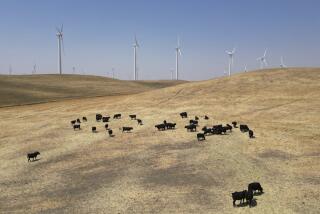FEEDBACK
- Share via
Christopher Hawthorne’s interesting and insightful piece on Dubai (“Desert Ripple,” June 21) did us a service in separating the forest (the emerging urban form of clusters of unified development) from the trees (the individual buildings).
More critical thought is needed to understand this emerging form of urbanism that is so different than is practiced in large U.S. cities. The Dubai experience is sometimes called the new “Middle East urbanism.” This urbanism is expressed through large-scale projects, under single sponsorships, occurring all over the world being driven by the need to accommodate the urban growth rates in non-Western countries. That Dubai projects take parts of what they like from around the world and re-create it is not surprising. They do it because they can, and because they are establishing a new type of urbanism not reliant on imperial or theocratic directives.
There is also a bit of clever marketing occurring here. Like the Barcelona “strategic planning” model, the Dubai urbanism model is useful to design and construction firms seeking to expand their business into non-Western markets. The Dubai model also represents a globalization of architectural and development services that has done a lot for educating designers in working in non-Western settings. All mass urban development is sterile when new by its nature. It cannot be otherwise. They lack the luxury of time and the benefits of social construction of space. Give these projects 30 or 40 years to mature and ripen and we’ll be able to taste what kind of fruit they truly bear.
William Siembieda
Siembieda is professor and department head, city and regional planning, College of Architecture and Environmental Design at Cal Poly San Luis Obispo.
More to Read
The biggest entertainment stories
Get our big stories about Hollywood, film, television, music, arts, culture and more right in your inbox as soon as they publish.
You may occasionally receive promotional content from the Los Angeles Times.










